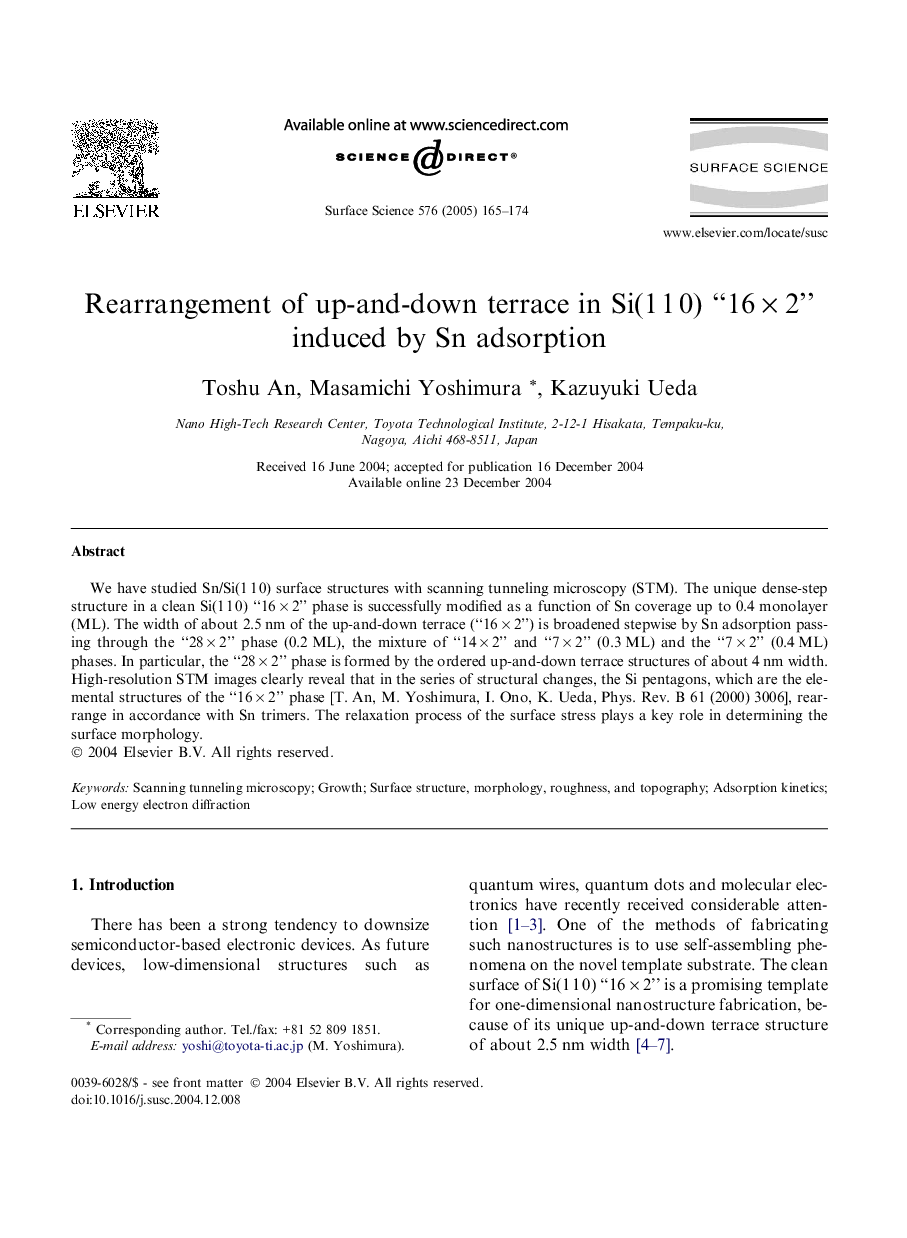| Article ID | Journal | Published Year | Pages | File Type |
|---|---|---|---|---|
| 9595136 | Surface Science | 2005 | 10 Pages |
Abstract
We have studied Sn/Si(1Â 1Â 0) surface structures with scanning tunneling microscopy (STM). The unique dense-step structure in a clean Si(1Â 1Â 0) “16Â ÃÂ 2” phase is successfully modified as a function of Sn coverage up to 0.4 monolayer (ML). The width of about 2.5Â nm of the up-and-down terrace (“16Â ÃÂ 2”) is broadened stepwise by Sn adsorption passing through the “28Â ÃÂ 2” phase (0.2Â ML), the mixture of “14Â ÃÂ 2” and “7Â ÃÂ 2” (0.3Â ML) and the “7Â ÃÂ 2” (0.4Â ML) phases. In particular, the “28Â ÃÂ 2” phase is formed by the ordered up-and-down terrace structures of about 4Â nm width. High-resolution STM images clearly reveal that in the series of structural changes, the Si pentagons, which are the elemental structures of the “16Â ÃÂ 2” phase [T. An, M. Yoshimura, I. Ono, K. Ueda, Phys. Rev. B 61 (2000) 3006], rearrange in accordance with Sn trimers. The relaxation process of the surface stress plays a key role in determining the surface morphology.
Keywords
Related Topics
Physical Sciences and Engineering
Chemistry
Physical and Theoretical Chemistry
Authors
Toshu An, Masamichi Yoshimura, Kazuyuki Ueda,
